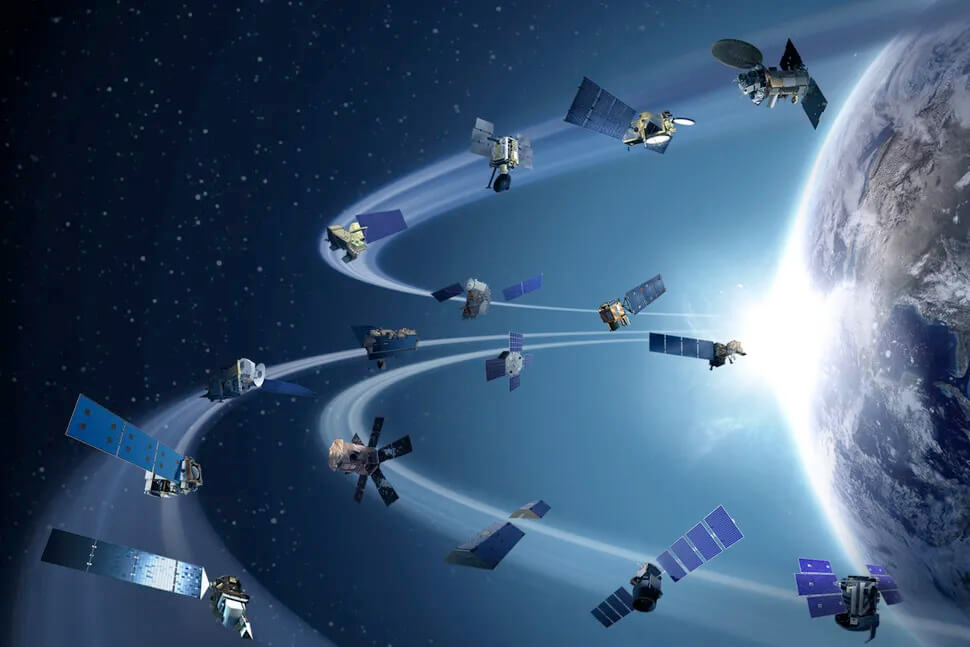Global interest in human spaceflight has ignited passions for the emerging commercial space ecosystem, and efforts to expand space research and related manufacturing are taking center stage in Ohio.
Gathered in support of future human activities in space, students, professionals and researchers from numerous industries assembled in April for the third annual Workshop for Research in Low-Earth Orbit, hosted by The Ohio State University.
Presented by Starlab Space Inc. and the Mitsubishi Corporation, the two-day event involved scientific talks and panels aimed at preserving and advancing research in low-Earth orbit (LEO), an orbital plane relatively close to the planet's surface. Many satellites, including the International Space Station and the Hubble Space Telescope, operate at this altitude.
Due to the weightlessness of this unique environment, there are major benefits to doing research in microgravity. Because removing Earth's gravity from the equation may reveal new insights about forces on the ground, scientists can use space as a test bed to investigate and study new phenomena and processes. Experiments conducted in LEO have led to the development of next-generation materials across a multitude of fields, including communications, defense, medicine and green energy.
"Low-Earth orbit is going to push us in terms of our design capability," said Kate Rubins, a former NASA astronaut, during a speech where she offered new perspectives of life aboard the ISS and recounted how she became the first person to sequence DNA in space. "Thinking about all these things that we're going to design anyway for spaceflight hardware, that's going to make this perfect equipment to take to other places on Earth."
During the workshop, panelists showcased their vision for the growing commercial space industry by sharing emerging technologies best suited to support human space exploration. Discussion topics ranged from devices next-gen travelers might use to enhance space station living to gadgets for astronaut health monitoring and advances that will help scientists refine future space food systems.
Marta Nowak, a professor of architecture at Ohio State, presented student-devised ideas for addressing spaceflight habitability issues, or how astronauts interact with the spaces and objects within their built environment. Some proposals suggested specialized sleep and storage modules for work, while another recommended using furniture as an exercise component to help astronauts maintain their health.
"The International Space Station, after more than 25 years in orbit, has proven humans can survive in space, but thriving remains elusive," said Nowak. "NASA recognized early that improving astronauts' quality of life would lead to better mission outcomes."
A one-size-fits-all approach to designing comfortable and accessible habitats won't work to keep people connected in such confined spaces, so adapting custom living solutions for future micro-environments will be vital for successful space exploration, said Nowak.
In advance of the many challenges NASA is likely to face over the next few decades of long-duration space exploration, speakers emphasized the need for more human-centered development in commercial research as well. "There is nothing in these [commercial] LEO stations that we are not going to need on the way to the moon or Mars," Rubins said.
Most notably, tech-heavy portions of the event focused on Starlab's forthcoming research facilities, an upcoming commercial space station which, in collaboration with Ohio State's George Washington Carver Science Park (GWCSP), promises to create essential infrastructure to prioritize scientific discovery for both astronauts in space and those of us at home.
"Our job is to reinvent how we assist the modern world and the people in it," said John Horack, Neil Armstrong Chair in aerospace policy at Ohio State and one of the co-hosts of the event. "That link starts with knowledge gained through research and education."
The event concluded with an announcement of the winner of the GWCSP Innovation Pitch Competition, a contest that invited space startups to present creative ideas on how to harness LEO for advanced scientific goals.
Of the three team finalists, Spaero Systems, a group that includes Ohio State students Ian Harris and Nikolas Harris, placed first and received the top prize of $5,000.






